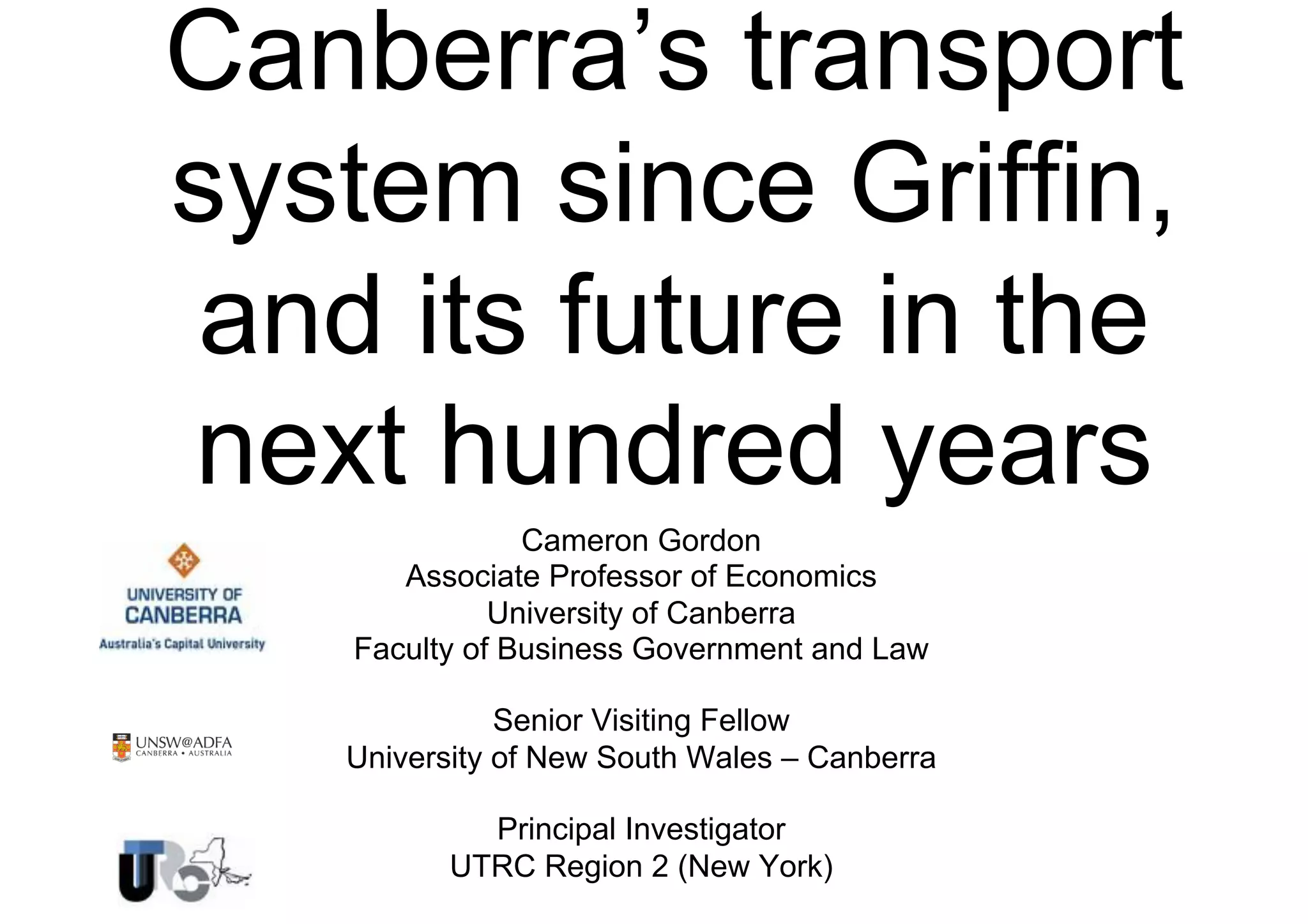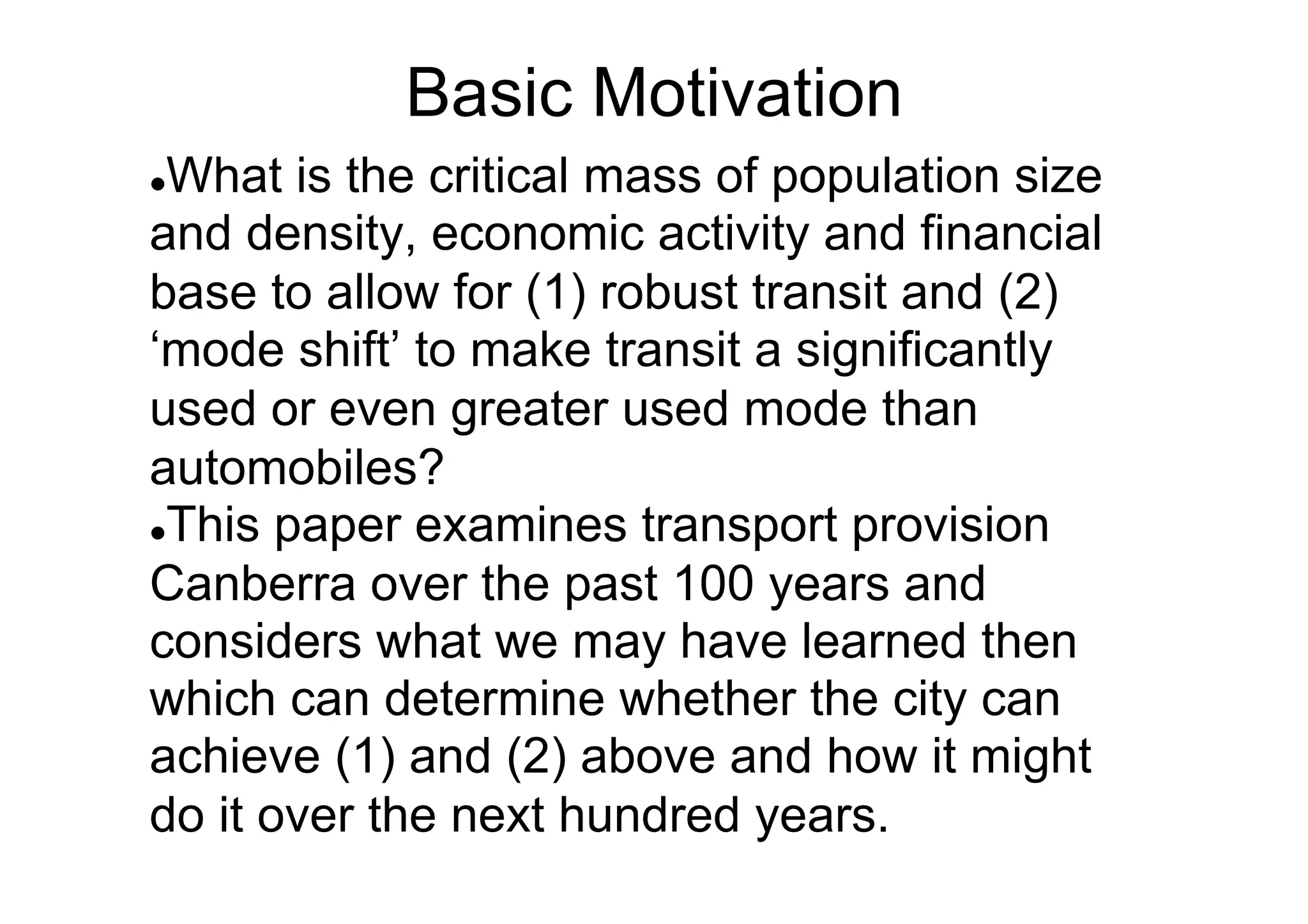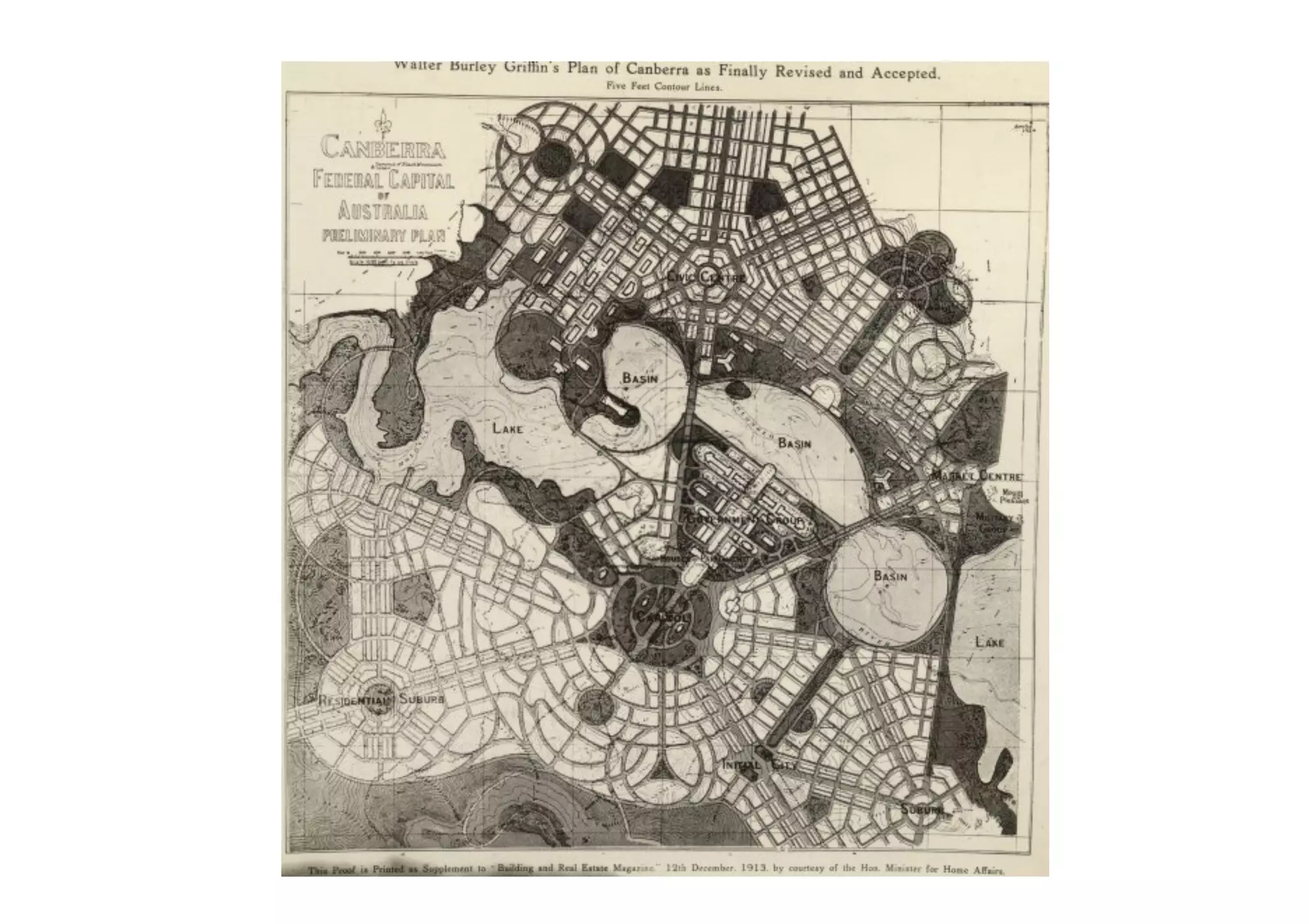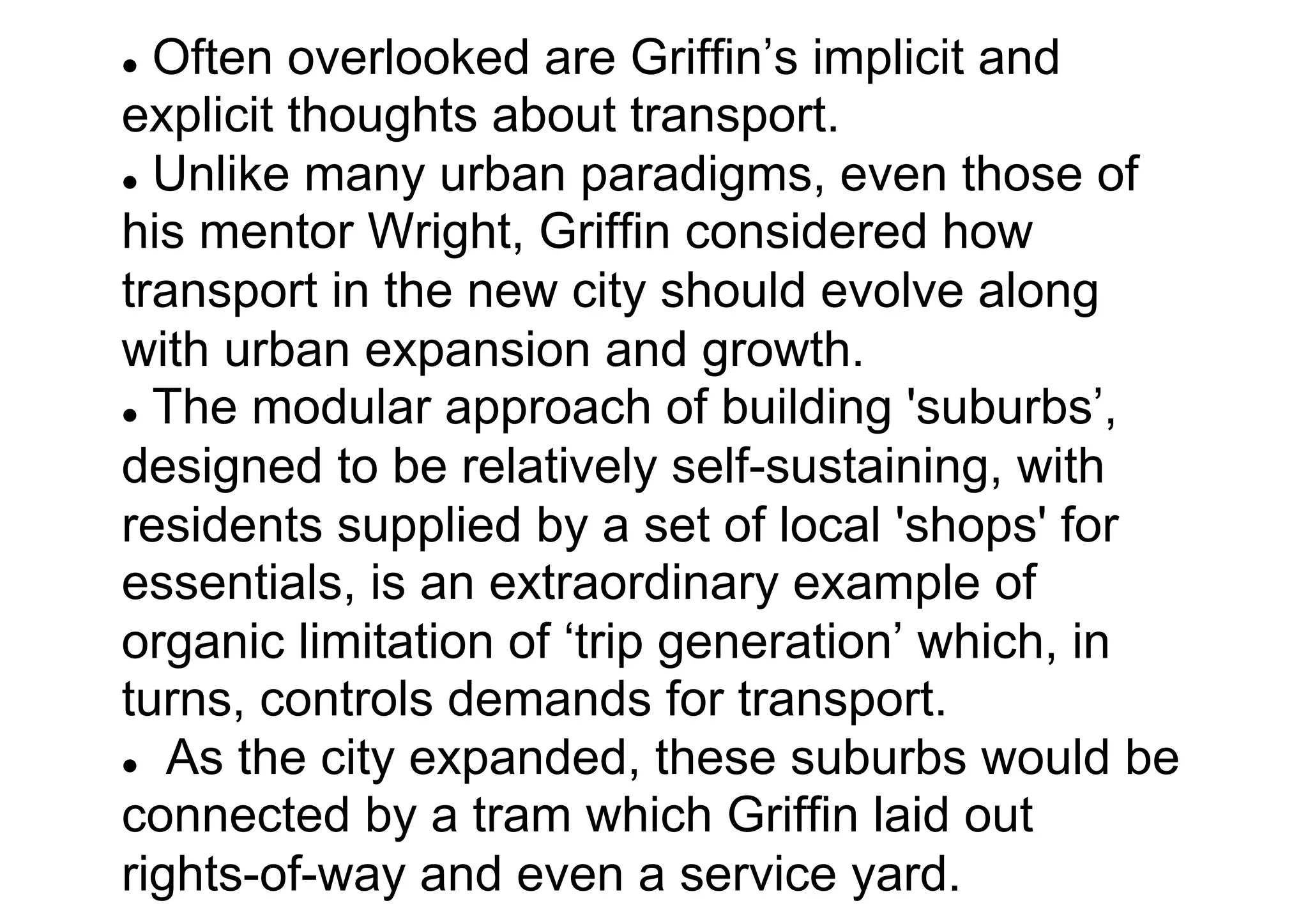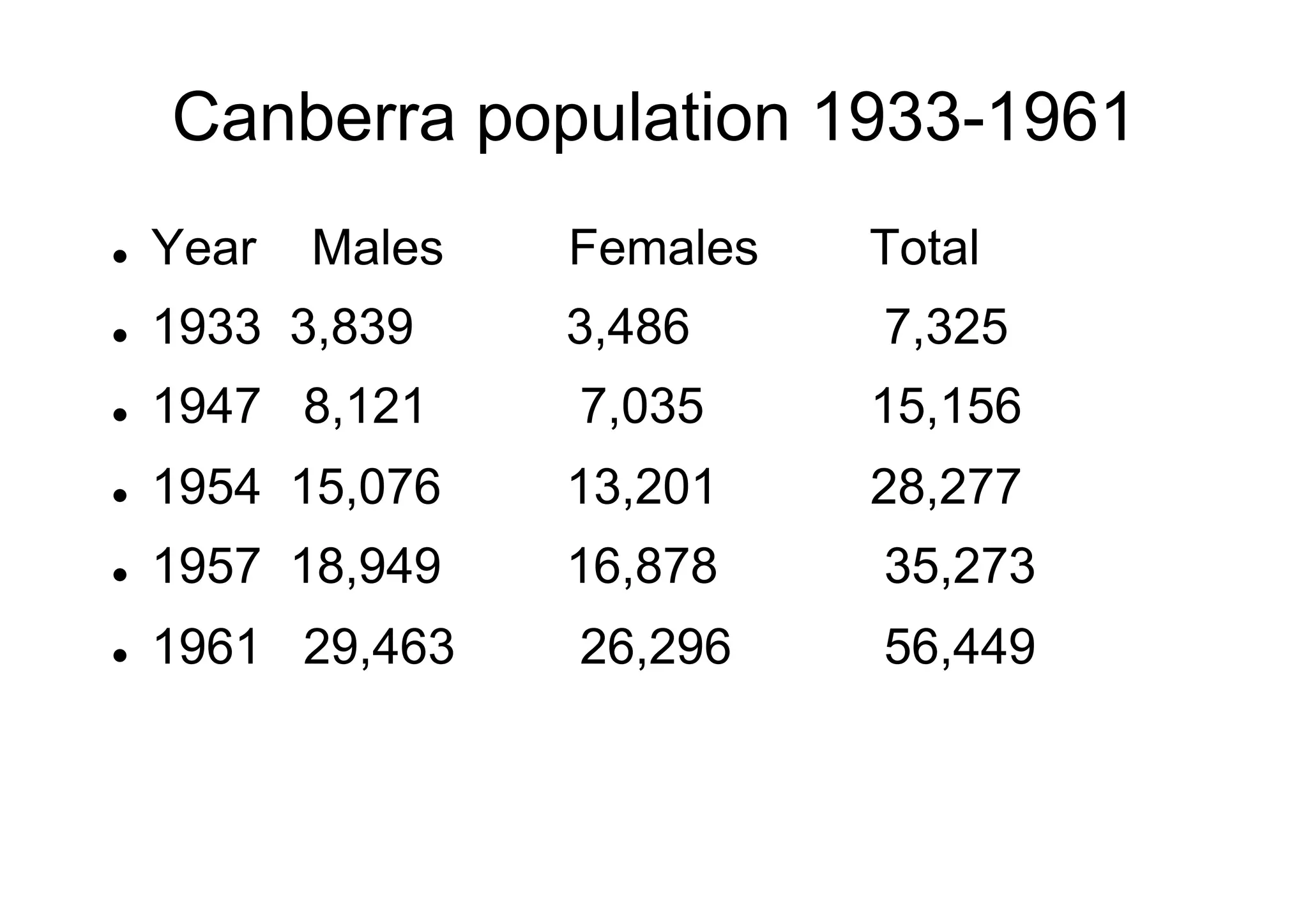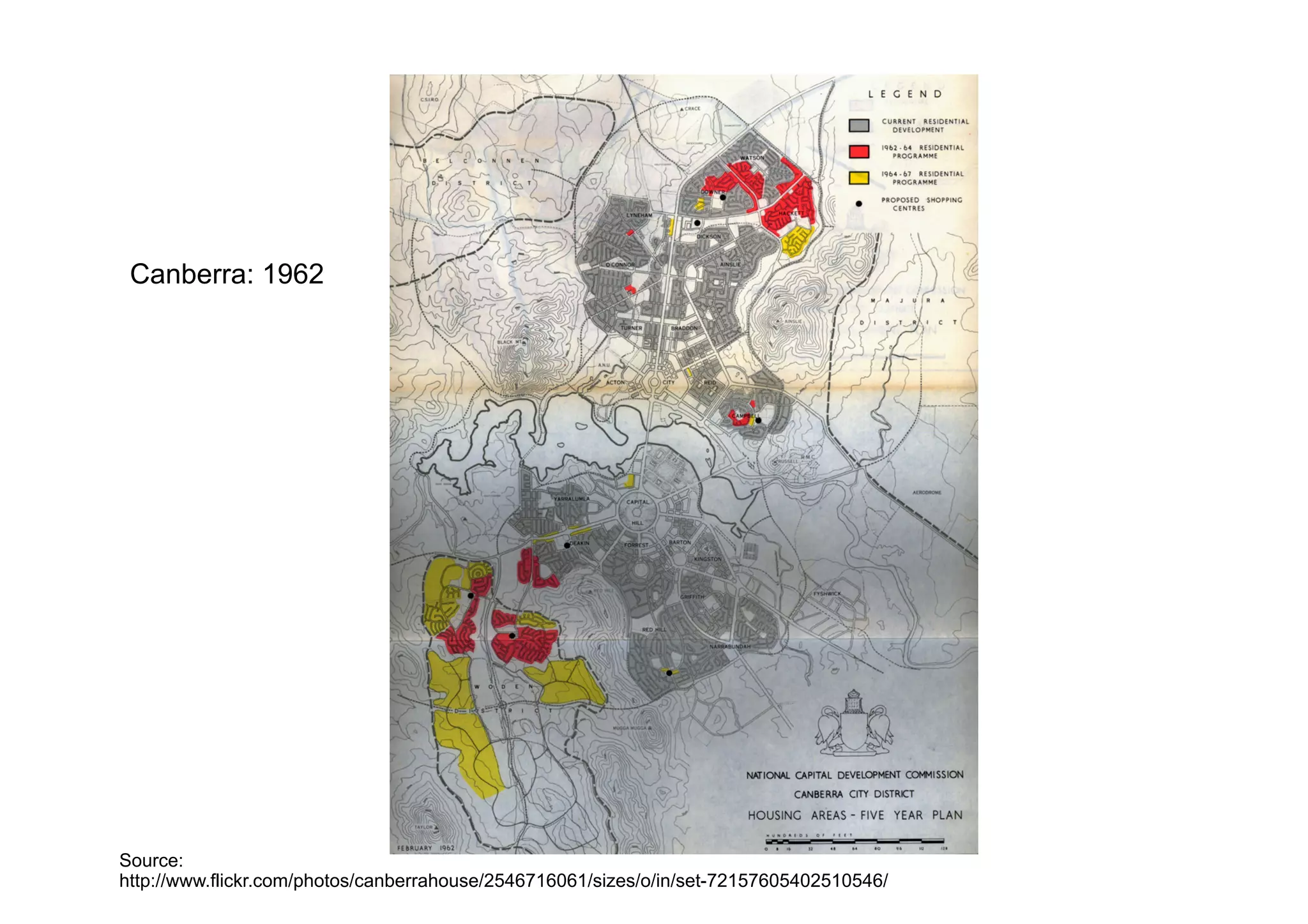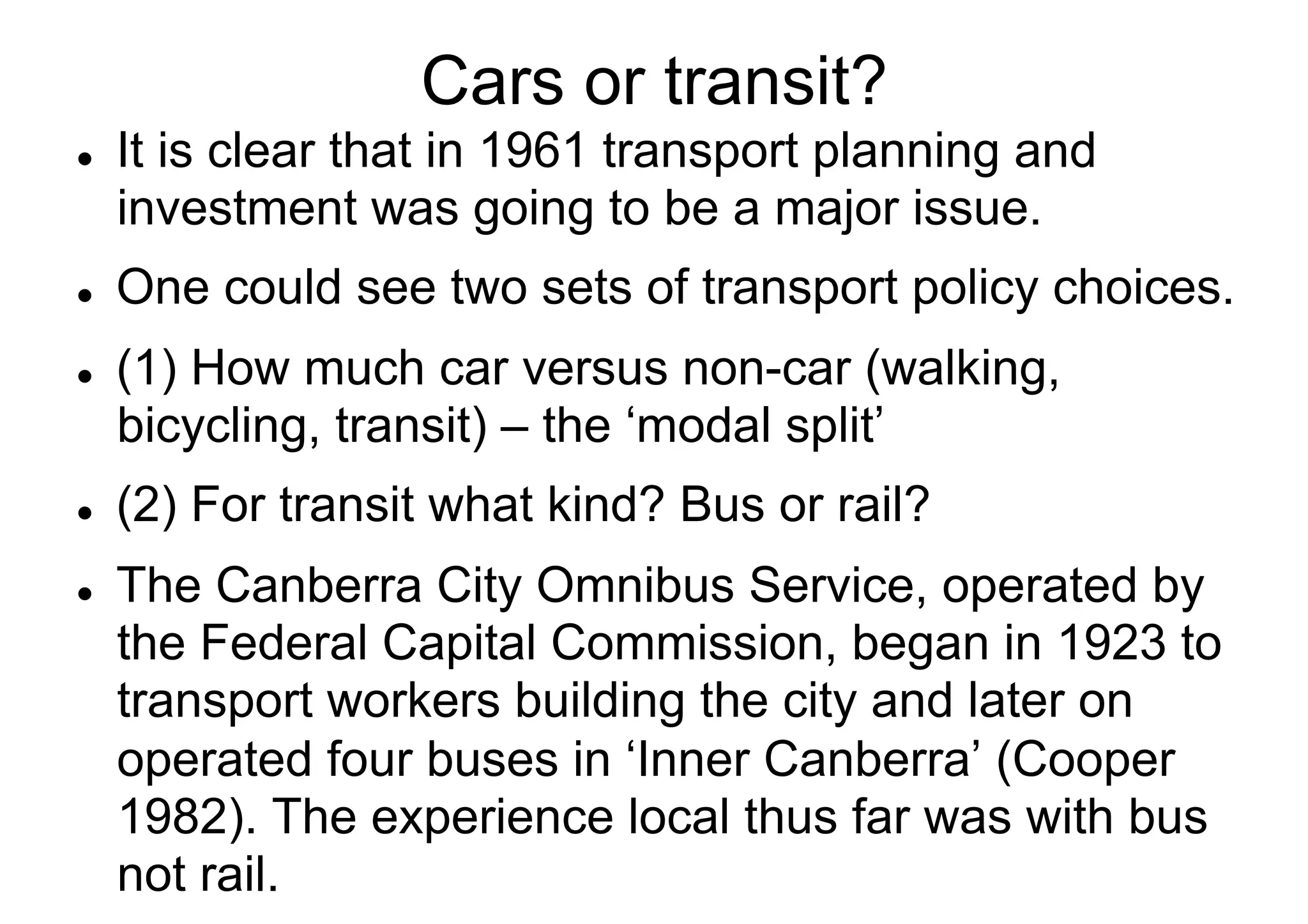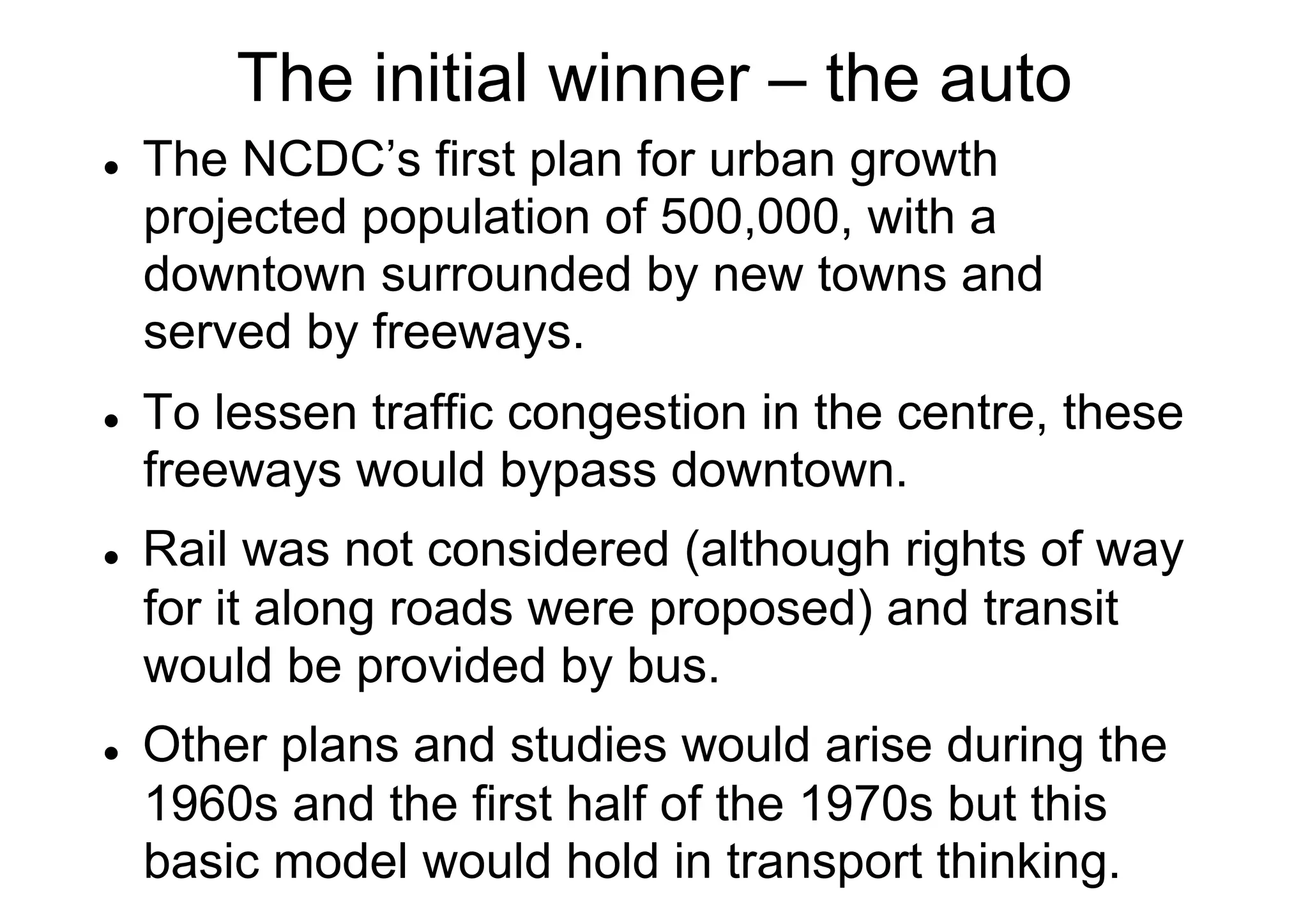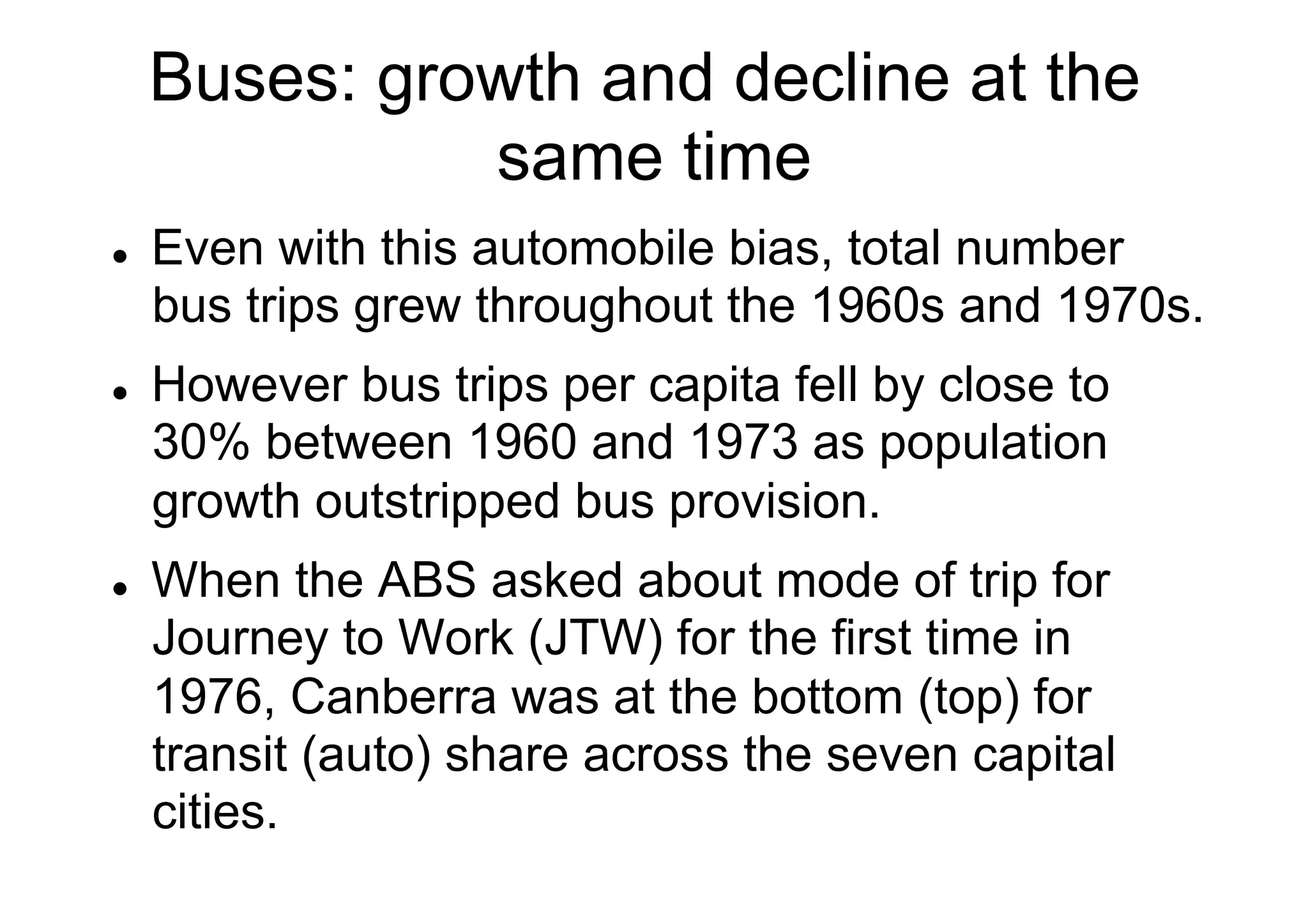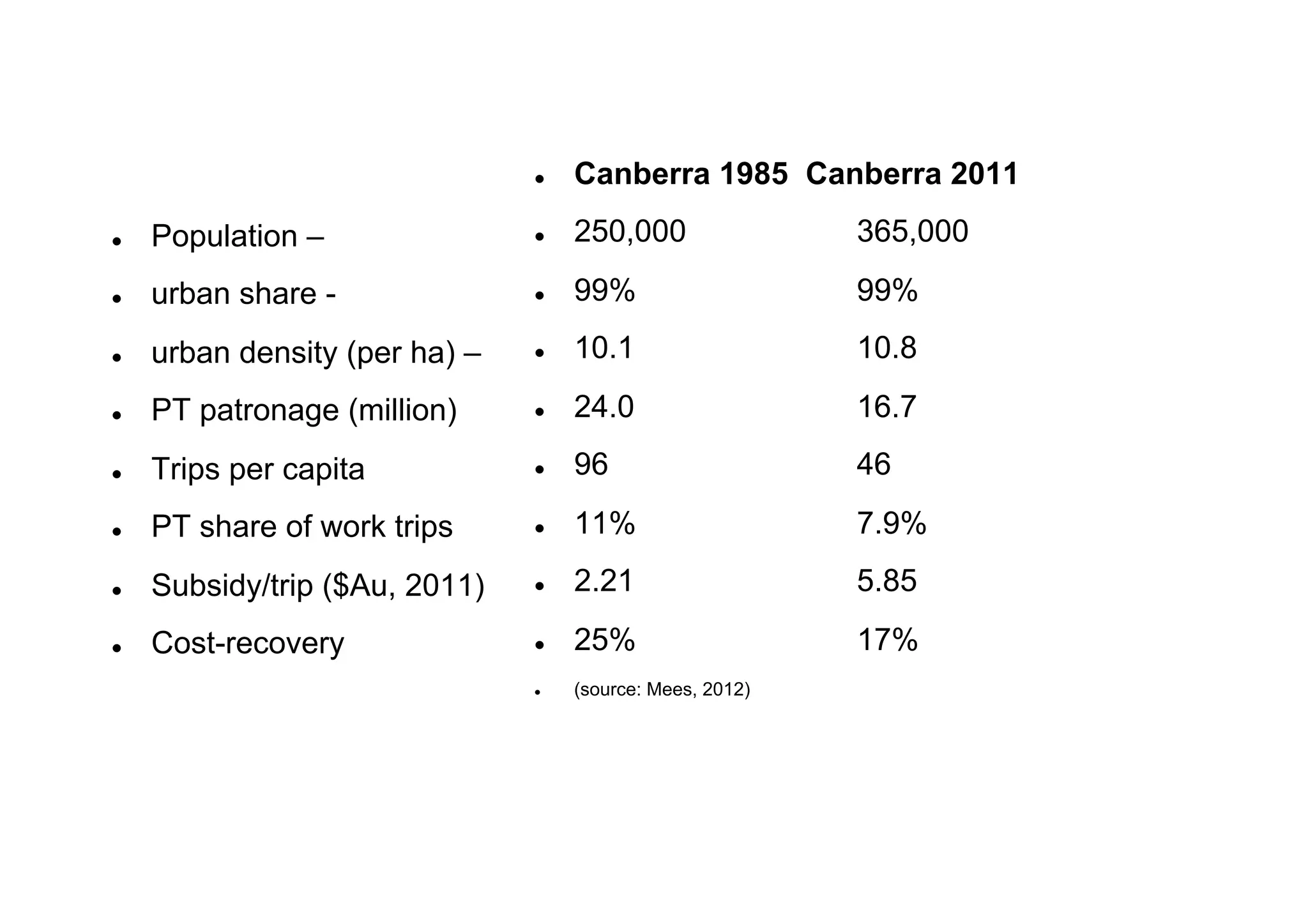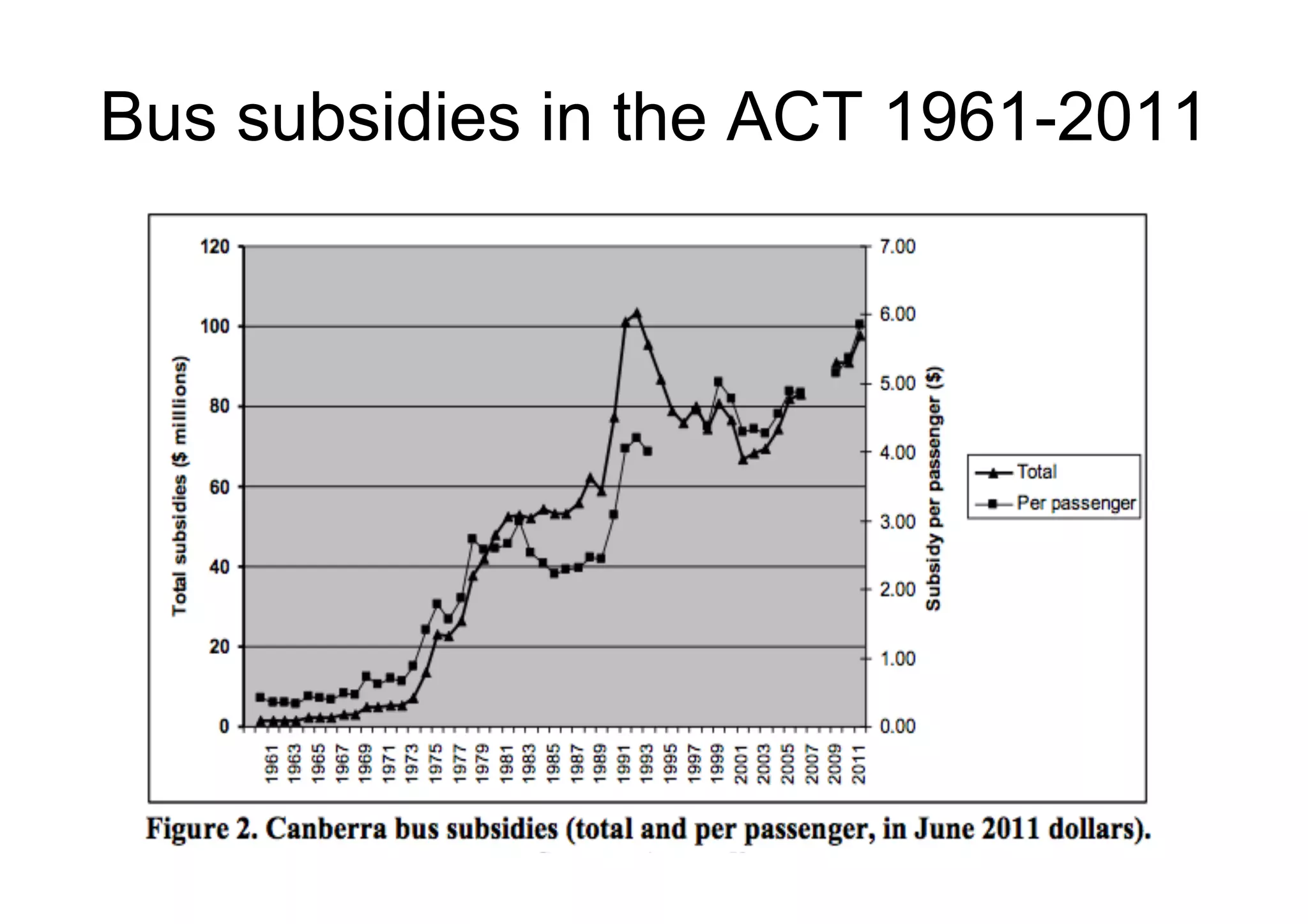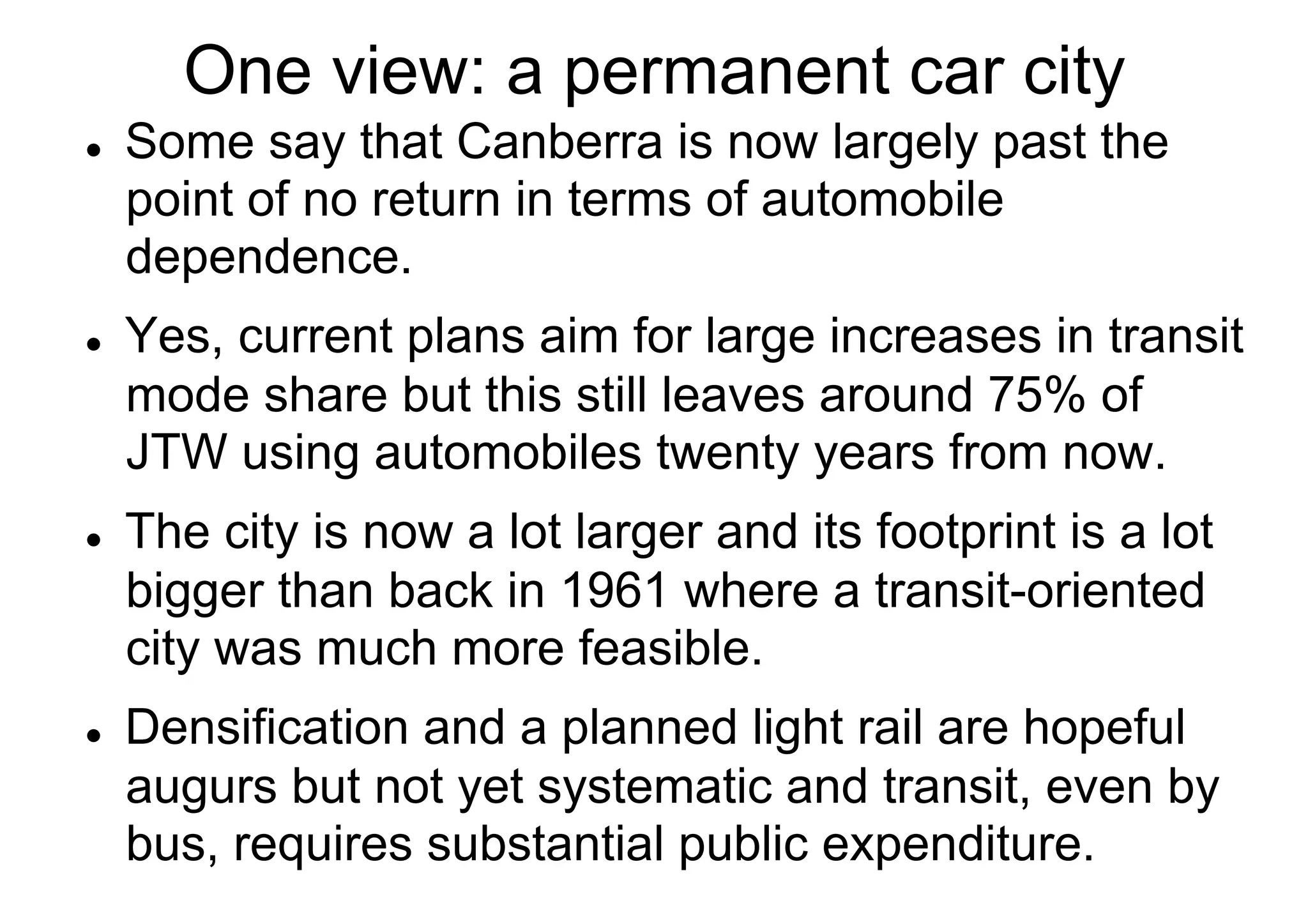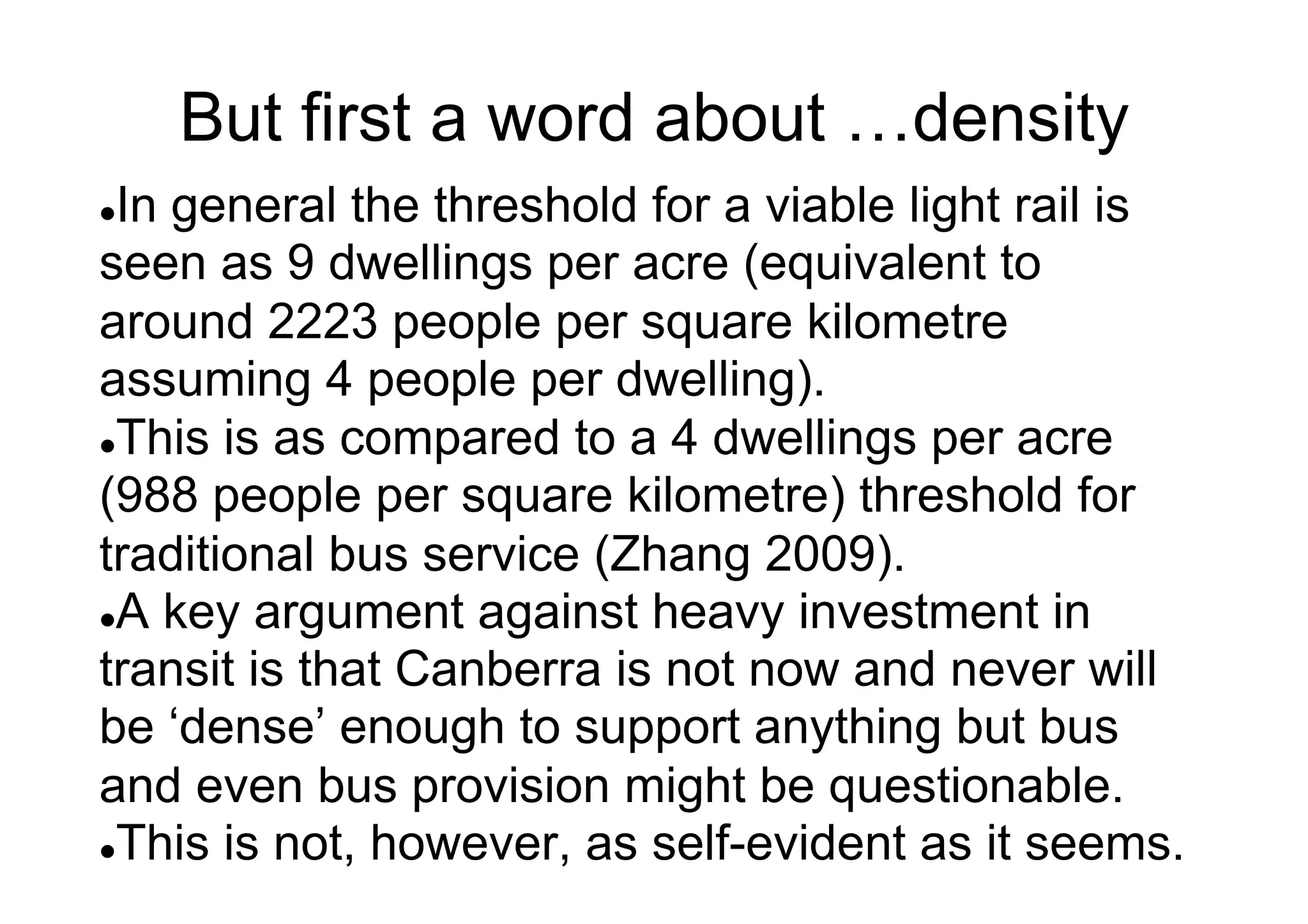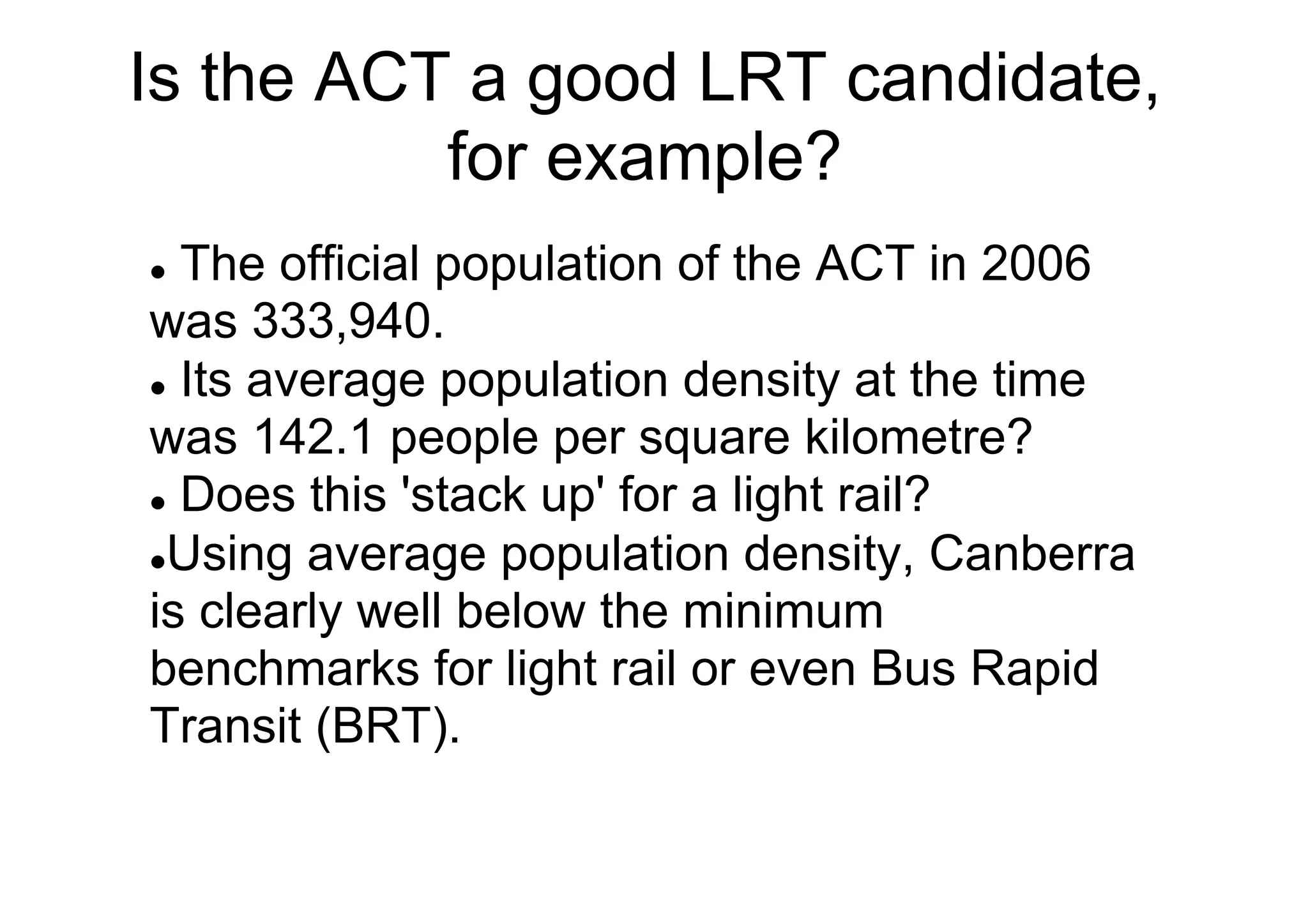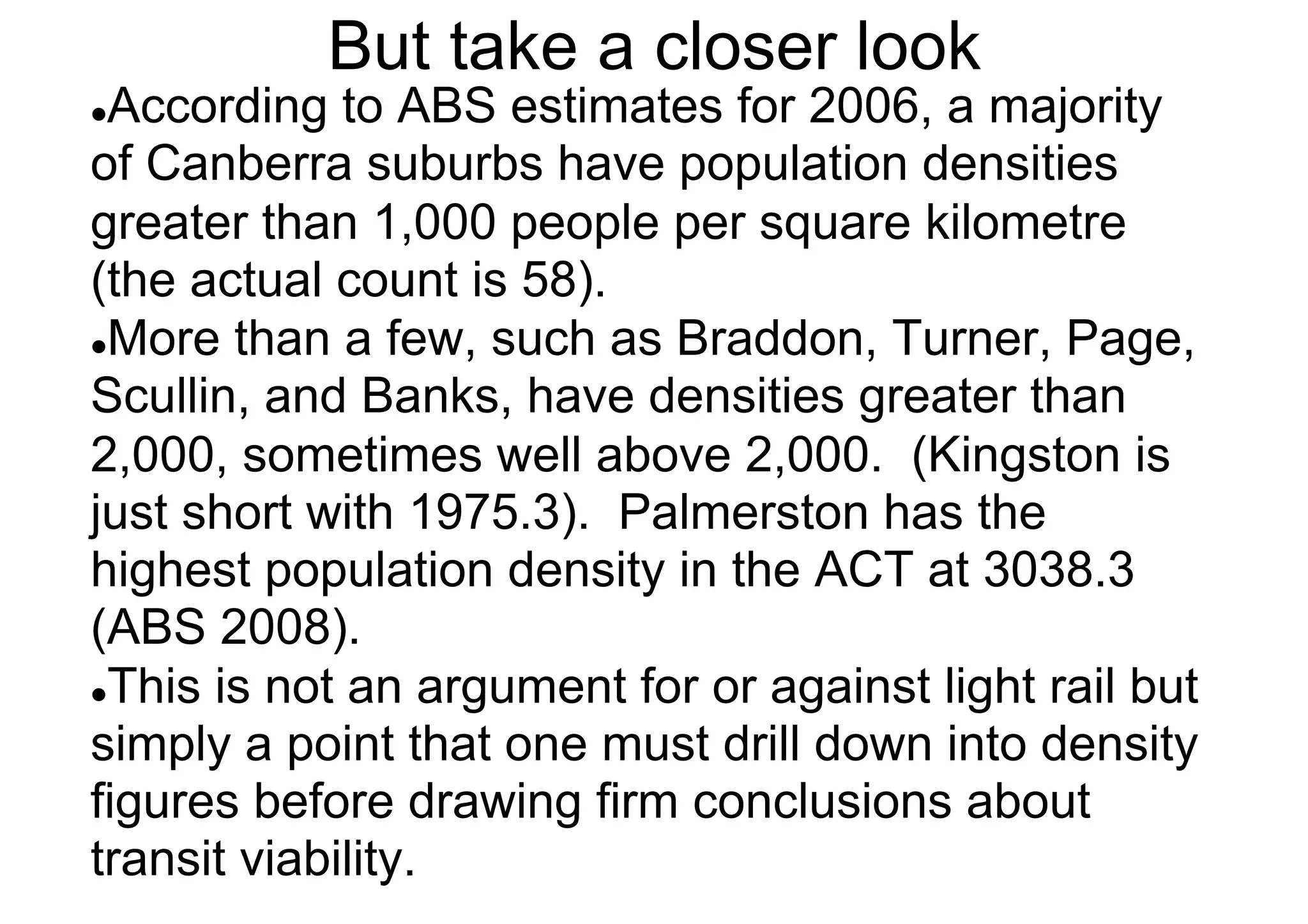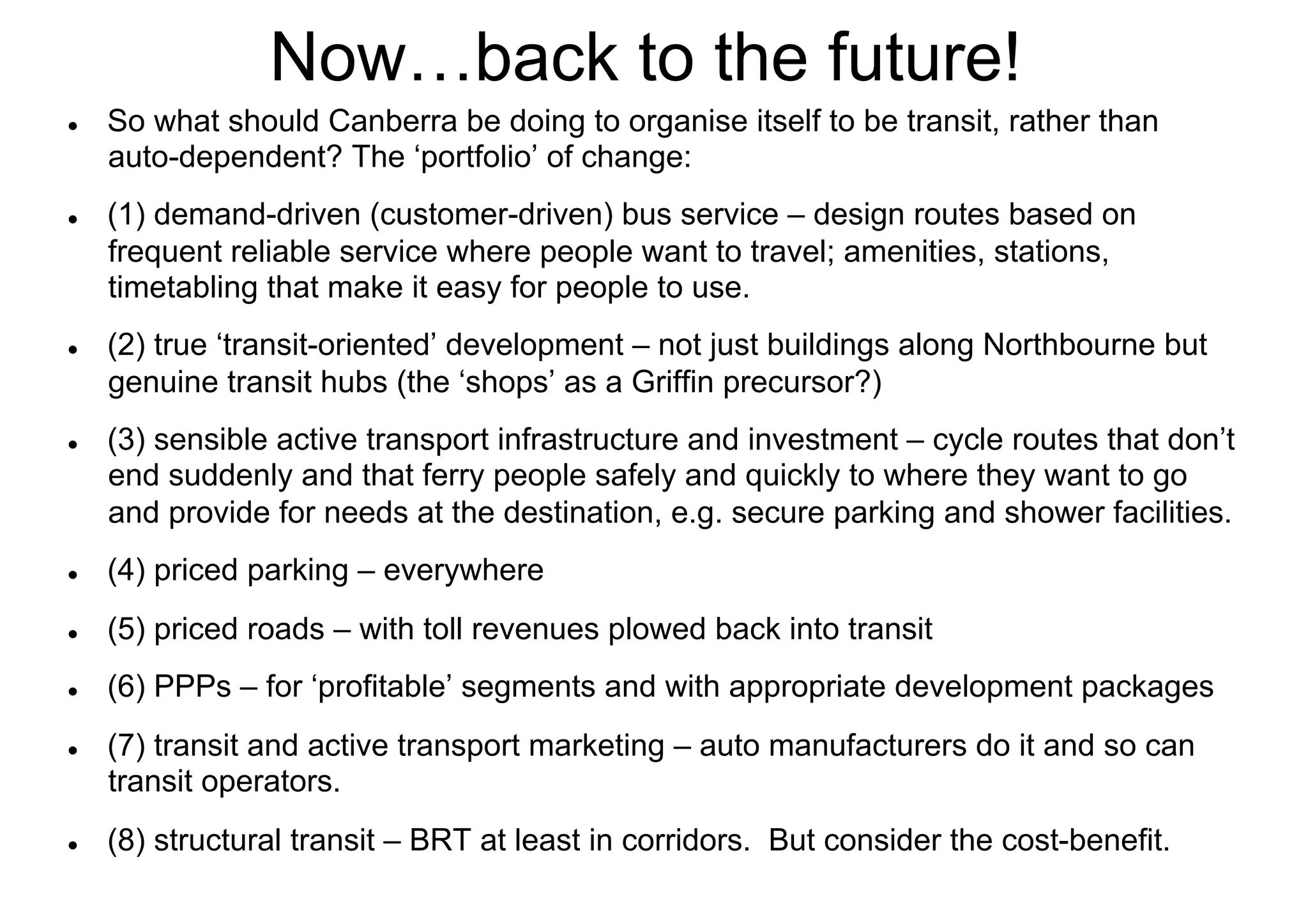The document analyzes Canberra's transport system over the past century and discusses the potential for a transition towards more robust public transit options. It highlights the early vision of urban planner Walter Burley Griffin and the challenges faced due to historical factors, including automobile dependence and fluctuating transit policies. The paper outlines potential strategies for future transport planning, stressing the need for a demand-driven bus service, transit-oriented development, and investments in active transport infrastructure to reduce reliance on cars.
